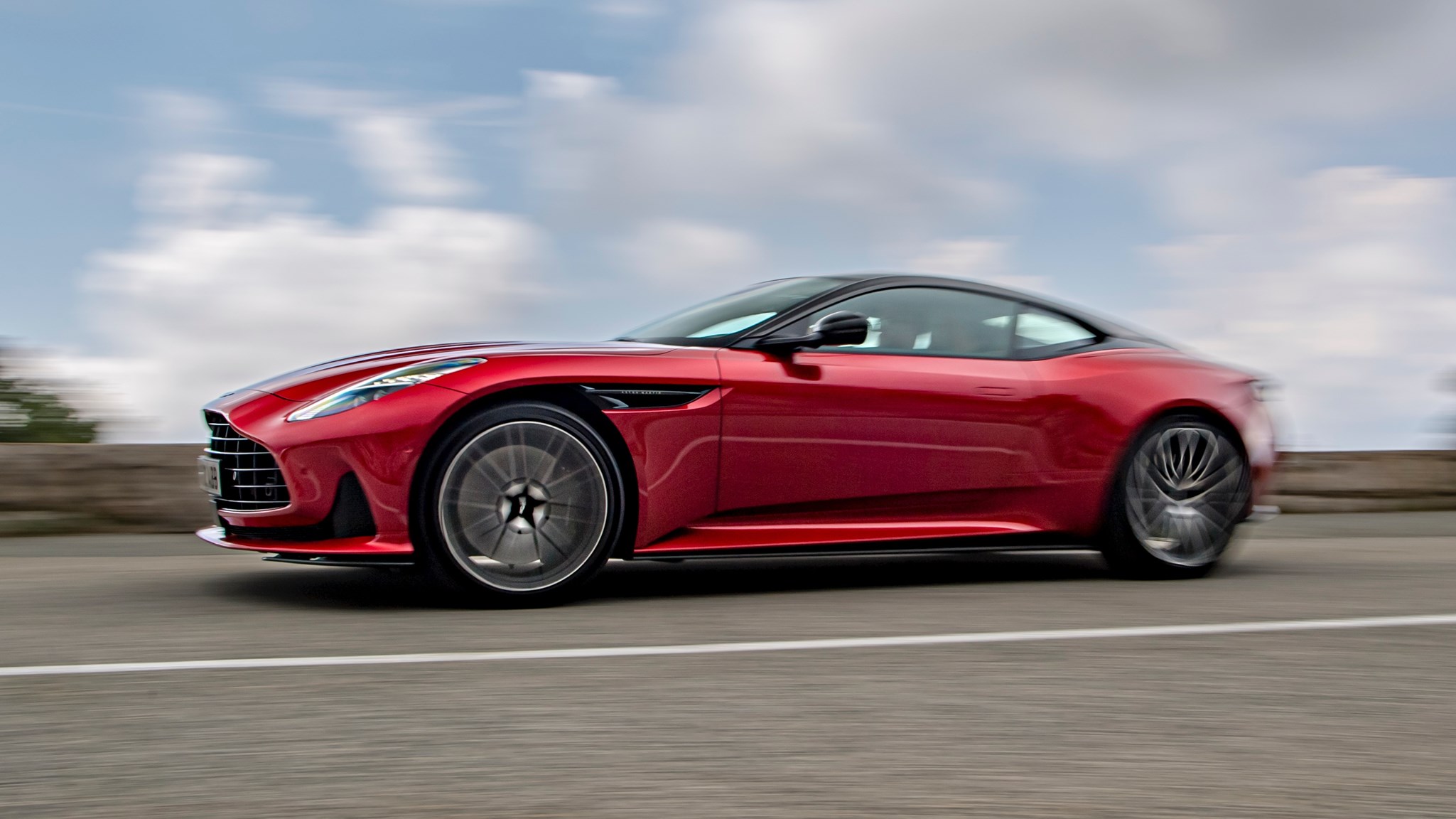► Goodbye V12, hello 671bhp V8
► Interior now feels like it’s from this century
► Could this be the best road Aston yet?
If you’re a fan of big combustion engines, and would rather shy away from electrification, the new Aston Martin DB12 has both good and bad news for you. On the one hand it entirely eschews hybridisation (for now at least), on the other, the name DB12 is not indicative of the cylinder count beneath the heavily vented bonnet.
Gone is the 5.2-litre twin-turbo V12, replaced by a thoroughly reworked AMG-sourced 4.0-litre V8. Cam profiles and compression ratios have been tweaked to better support two larger diameter turbos still nestled between the cylinder banks, while the cooling system has been uprated.
The giant grille and vented bonnet allow everything to breathe better, the modifications bringing power to 671bhp at a modest 6000rpm. Torque is a gearbox-limited 590Ib ft between 2750rpm and 6000rpm.
What lurks beneath
Much has gone into sharpening the DB12 over the softer DB11, with torsional rigidity up 7% overall thanks to revised a underbody, engine cross brace, front crossmember and rear bulkhead. It’s far more in key areas like between the shock towers where the additional stiffness helps handling precision and steering feel.
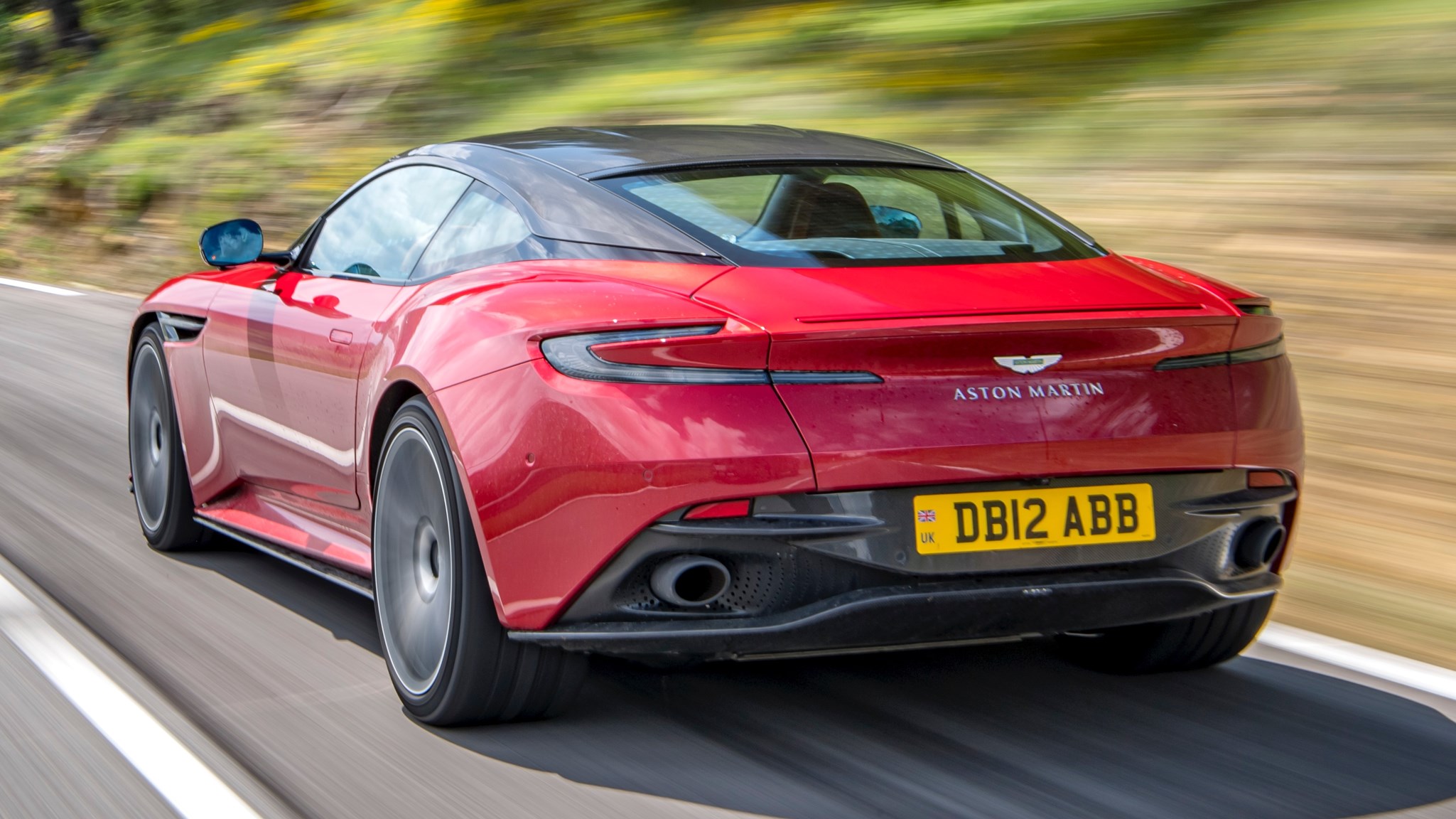
Wheel size might be up from 20 to 21-inches, yet unsprung weight is down eight kilos, with another 27kg saved if you opt for carbon ceramic brakes over the standard iron rotors. An e-diff is standard for the first time on a DB model, going from full open to totally locked in an instant, while a shortened final drive ratio helps perk up the acceleration. Stiffer anti-roll bars lead to flatter cornering while the dampers have a 500% increase in bandwidth of force distribution. Whatever that means.
Crucially, the DB11’s dated interior has been almost entirely replaced. Gone are all but two obvious bits of Mercedes switchgear, the horrifically dated infotainment system and the gearshift buttons. Instead, there’s a modern feel with bespoke infotainment and controls and a neat 911-style gearshift toggle.
Skip to the good bit
We’ll get to the new interior later in our Aston Martin DB12 review, but let’s concentrate on the driving experience first. The uprated engine is perfectly tractable in regular traffic with the eight-speed auto changing smoothly and respectable urge well below 2000rpm. You really notice the turbos start huffing at 2750rpm, with the DB12 feeling faster than its 0-62mph time of 3.6 seconds would suggest when extended.
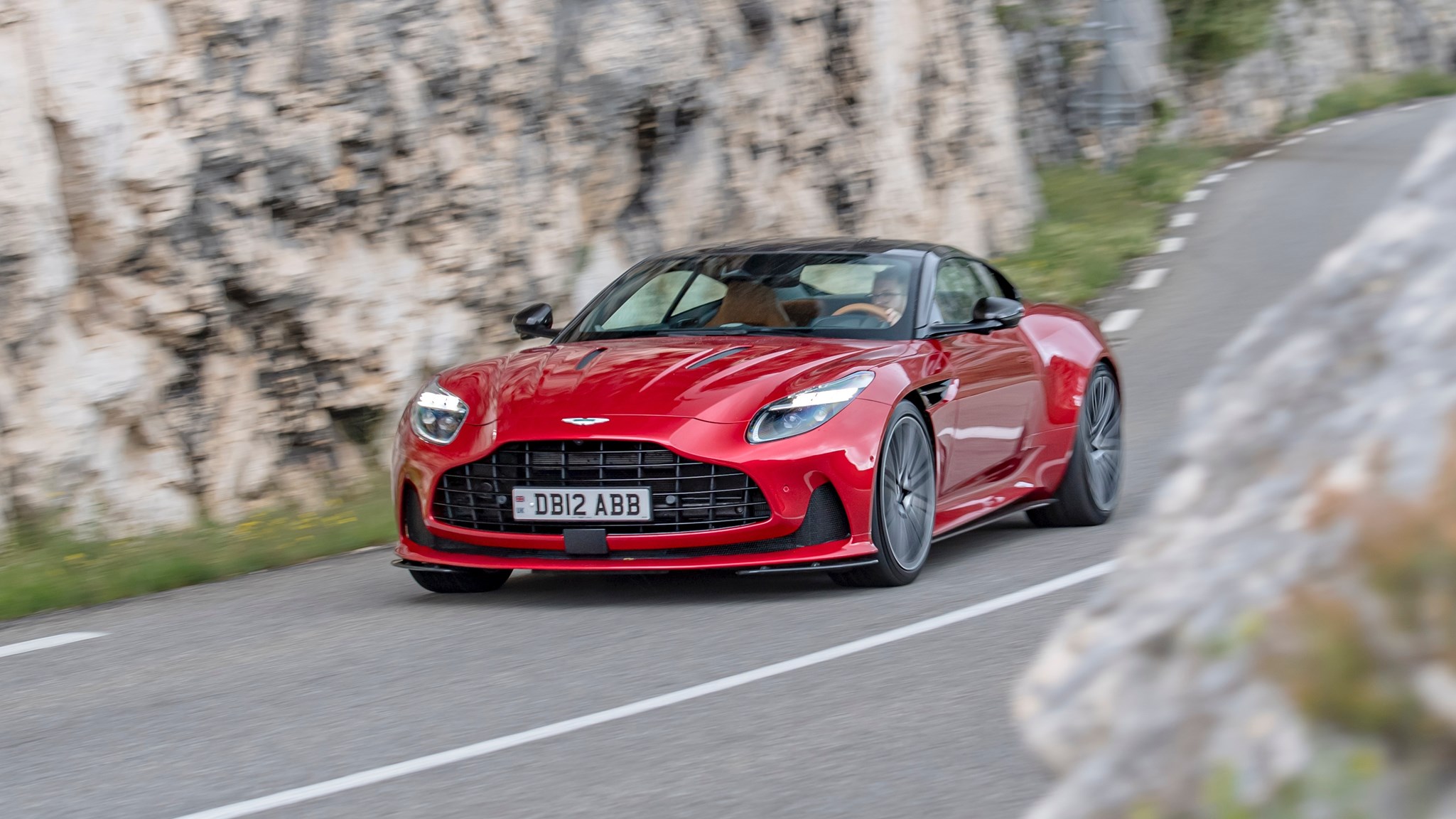
This is ultimately down to traction, not that the DB12 is short of that. It might not hook like something with four-wheel drive, a rear mounted engine or both, but a combination of Michelin Pilot Sport 5S tyres, new dampers with a far greater range of adjustment and more advanced electronic assistance does a fine job.
They certainly make the prodigious performance far more accessible than you’d think, even when the roads are soaking wet. The feelsome steering impressively combines a quick rack and good on centre tactility yet doesn’t feel at all nervous on the autoroute. It’s all the more impressive given how it’s a fixed and not progressive ratio.
Imperfections in the road’s surface are felt with a generous layer of insulation, with no thuds, thumps or crashes felt during our drive. Furthermore, wind and road roar aren’t too bothersome, and the V8 quietly works away with the exhaust in its most timid mode. Combined, they make the DB12 a terrific long-distance companion.
Bring on the bends!
Rotating the substantial knurled drive mode selector knob from GT to Sport dials up the attitude a little. Body control is tightened without ruining the ride, the gearbox is less hesitant to kick down and the V8 gains a bit more voice. Sport+ fully uncorks the V8’s exhaust, but the suspension setting is too stiff for the roads we’re on. Individual mode sorts that out, and Wet certainly gives extra reassurance when the roads suddenly become sodden.
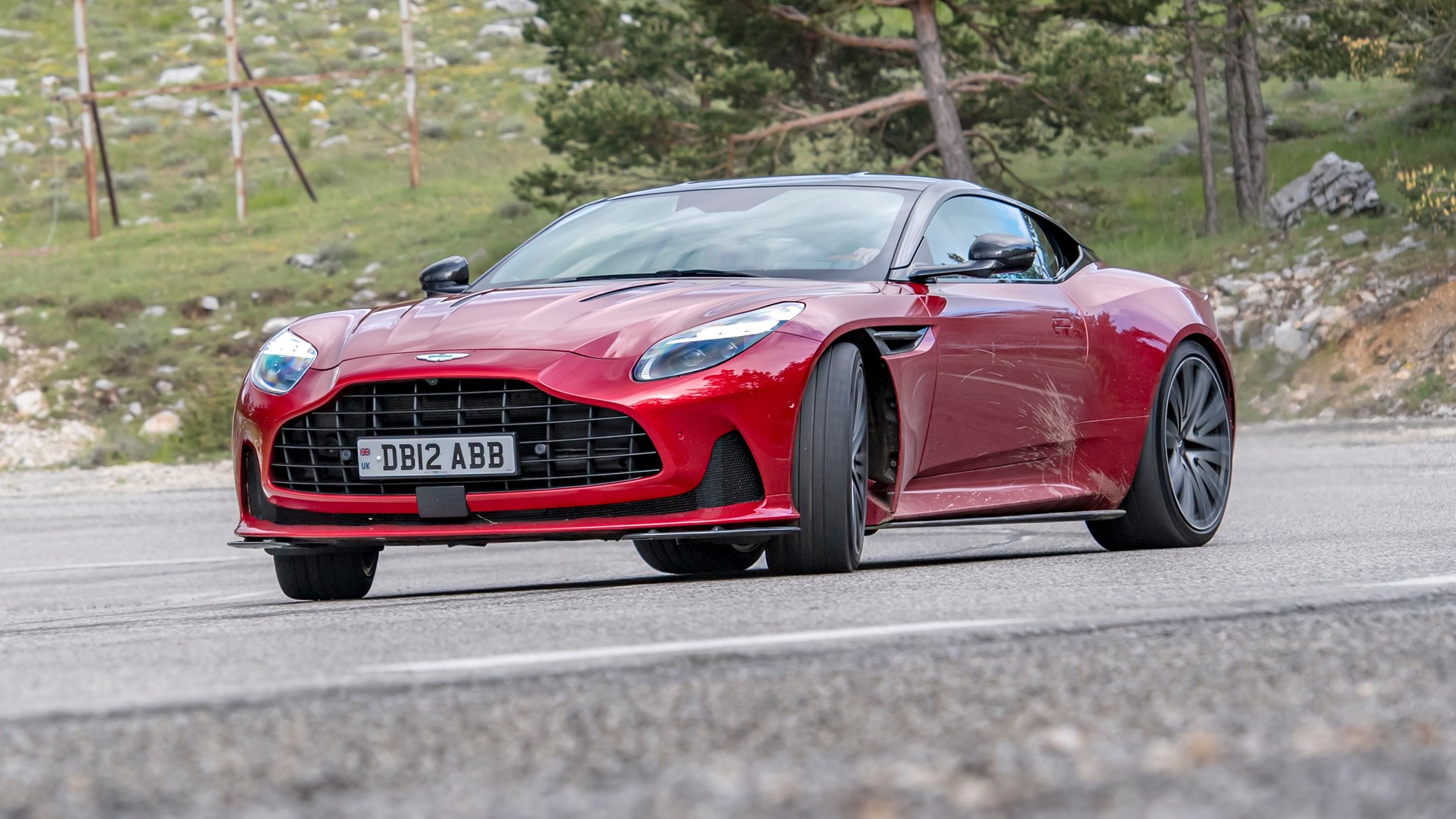
The new ESC system is a big help here, utilising a six-axis inertia measurement to predict and manage slippage more effectively without feeling too intrusive. Its interventions are subtle and short in the dry, allowing you to make the most of the unrelenting acceleration.
A series of hairpins makes you appreciate the quickness of the rack and the predictability of the front end, with those messages from the front tyres continuing to flow. Braking power and feel gives you plenty of reassurance. With exceptionally well controlled body movements, little roll and great balance, it’s a hoot on a winding road and delightfully controllable should you decide to switch off the ESC and have some fun.
An interior revolution
You might not be surprised by the DB12’s fine dynamic repertoire, but you should by the interior transformation. Aston has sensibly kept physical controls for the heating, stereo volume and a few other key functions, so the low positioning of the touchscreen infotainment system isn’t too bothersome on the move. The digital driver’s display is sharp and widely configurable, bringing information from the main screen into your eyeline.
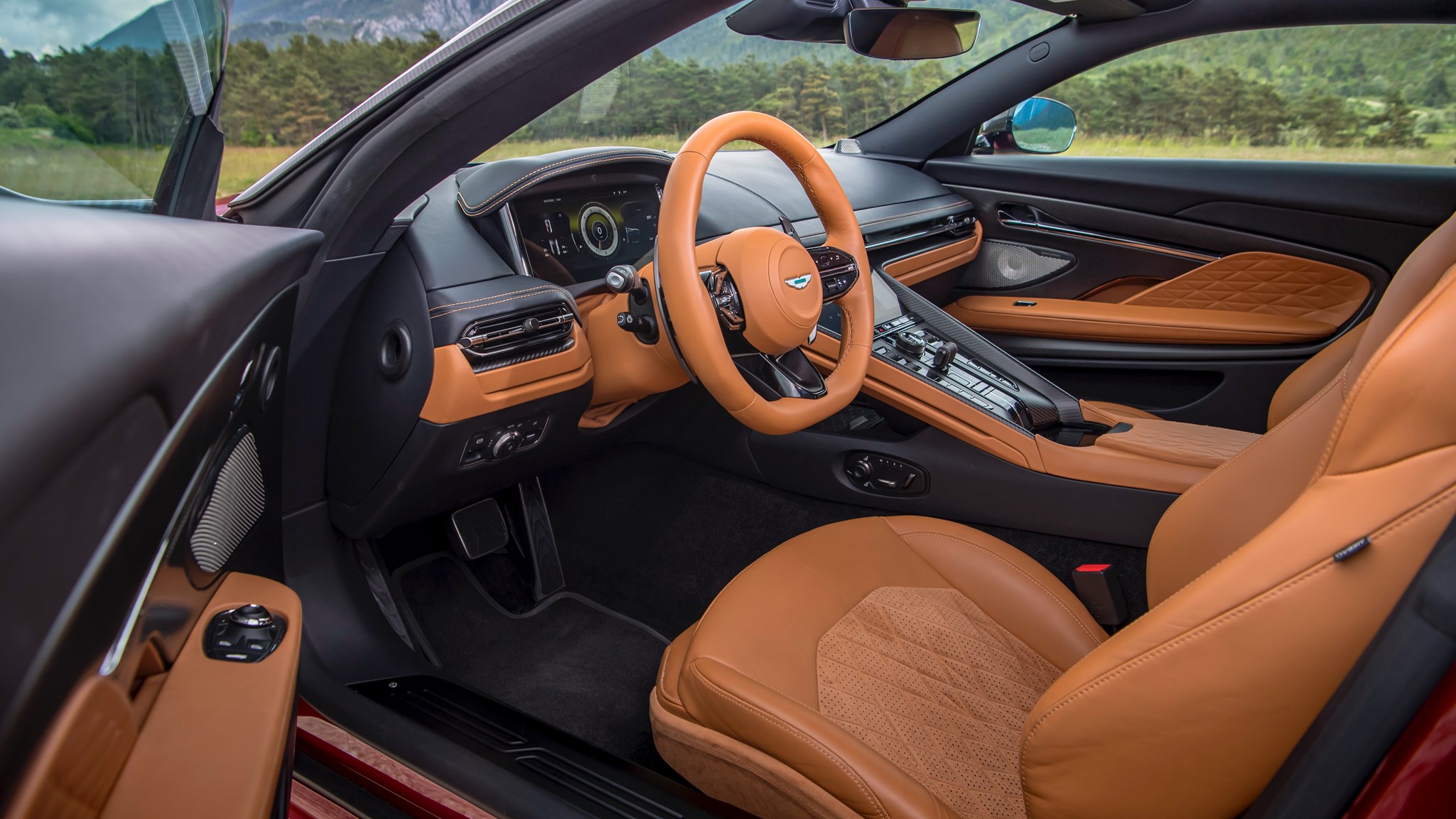
That 10.25-inch screen and the driver’s display run Aston’s own software. Responses from the big screen are quick, with menus that aren’t too hard to fathom and graphics that look suitably upmarket. It sits in a new raised centre console with a storage tray underneath, helping make the interior look bang up to date.
Rich materials are to be found throughout the cabin, including on the two tiddly rear seats that are best left to children and luggage. Not that you’ll necessarily have to sling your bags there, boot space is a reasonable 262 litres.
Aston Martin DB12 review: verdict
Rather than feel like yesterday’s reheated leftovers, the DB12 is a substantial step on from its predecessor. The interior alone makes it a far more tempting prospect than the DB11, no longer feeling like a portal to the 2010s and instead like a genuine competitor to the Bentley Continental GT.
But the DB12 entertains its driver like no Conti GT, whether they’re pottering to Nice or up in the mountains enjoying a hairpin or three. Some might miss the V12’s noise, but you won’t feel like you’re missing out in terms of performance, while it’s surprisingly accessible. All this makes it one of the finest grand tourers you can buy.
